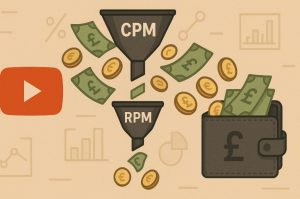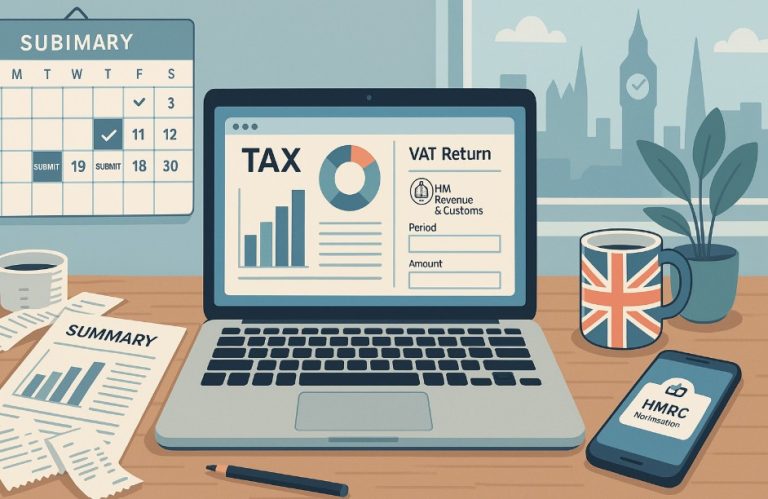How Much Is YouTube Income Per 1,000 Views in the UK?
YouTube has become a cornerstone of the digital economy, providing content creators around the world with the opportunity to earn money from their videos. In the UK, thousands of creators rely on YouTube as a primary or supplementary source of income. But one of the most frequently asked questions remains: how much is YouTube income per 1,000 views in the UK?
The answer to this question is not fixed. YouTube’s payment structure is complex, and the income a UK creator earns per 1,000 views depends on several variables such as audience location, watch time, content niche, viewer engagement, and advertiser demand.
This blog explores how YouTube’s monetisation model works in the UK, the average earnings per 1,000 views, and practical ways to maximise revenue.
How Does YouTube’s Payment Model Work?

YouTube pays creators primarily through advertising revenue under the YouTube Partner Programme (YPP). The platform allows advertisers to place ads on monetised videos, and the revenue generated from those ads is shared with the creators. This revenue model is based on impressions and engagement rather than just views.
CPM and RPM: What’s the Difference?
To understand how payments work, it’s essential to distinguish between CPM (Cost Per Mille) and RPM (Revenue Per Mille). These two metrics determine how much money flows from advertisers to creators.
| Term | Definition | Who Benefits |
| CPM | Cost an advertiser pays per 1,000 ad impressions | YouTube (before revenue share) |
| RPM | Creator’s actual earnings per 1,000 views after YouTube’s cut | Creator (after deductions) |
YouTube typically takes a 45% cut of advertising revenue. If a UK creator has a CPM of £5.00, the RPM could be around £2.75. RPM is a more realistic indicator of what a creator actually earns.
How Advertisers and Ad Types Impact Revenue?
The type of ads shown on a video significantly influences earnings. Skippable video ads, non-skippable ads, bumper ads, display ads, and overlay ads all have different payout structures. Longer videos with higher engagement allow for mid-roll ads, which increase the total number of ads shown per video, thereby boosting earnings.
Some advertisers are willing to pay more for premium placements on videos that are advertiser-friendly, targeted at adult audiences, and aligned with high-value industries such as technology, finance, or real estate.
What Is the Average YouTube Income Per 1,000 Views in the UK?

There is no one-size-fits-all figure, but UK YouTubers generally earn between £1.00 and £3.50 per 1,000 views, depending on multiple factors. For creators in specific niches, the income can be even higher. For example, channels in personal finance or tech might see higher RPMs, whereas general vlogging or entertainment channels may earn less.
Sample Income Estimates by Niche
To illustrate how earnings differ across content categories, consider the following table:
| Content Category | Estimated RPM Range (UK) |
| Personal Finance | £3.00 – £5.00 |
| Tech Reviews | £2.50 – £4.00 |
| Health & Fitness | £1.50 – £3.00 |
| Gaming | £0.80 – £2.00 |
| Lifestyle/Vlogging | £0.50 – £1.50 |
| Beauty & Fashion | £1.00 – £2.50 |
| Education/Tutorials | £2.00 – £4.00 |
Real-Life Examples from UK Creators
Ali Abdaal, a well-known British productivity YouTuber, has reported RPMs exceeding £4.50 due to his niche appeal, long-form content, and global audience. Smaller creators with niche audiences have also reported earnings within the £2–£3 range per 1,000 views, showing that monetisation is viable even for mid-tier creators.
What Factors Affect YouTube Earnings in the UK?

YouTube earnings are influenced by a variety of factors that go beyond just the number of views. Understanding these factors can help creators optimise their content strategy for maximum income.
Viewer Geography
The country of the viewer plays a critical role in how much advertisers are willing to pay. UK viewers generally bring in higher CPMs than viewers from countries like India or Brazil. In fact, targeting audiences from developed countries can double or triple ad revenue compared to developing markets.
Watch Time and Audience Retention
Videos with longer watch time and high retention rates tend to perform better in YouTube’s algorithm, leading to increased visibility and more ad impressions. Additionally, videos longer than 8 minutes can feature multiple ads, significantly increasing total earnings.
Content Compliance and Advertiser-Friendliness
To maintain monetisation, creators must follow YouTube’s advertiser-friendly guidelines. Videos containing profanity, adult content, or controversial themes may be demonetised or limited in terms of ad revenue. Consistently producing clean, family-friendly content enhances a channel’s ability to attract high-value advertisers.
Video Frequency and Channel Growth
Channels that publish regularly are more likely to retain subscribers and attract consistent traffic. This consistency not only improves ad revenue but also makes the channel more appealing to potential sponsors and brand partners.
How Do UK YouTube CPM Rates Compare to Other Countries?
When assessing YouTube income, it’s helpful to compare CPM and RPM rates across different regions. The UK stands among the top-tier countries in terms of ad revenue, though it still lags slightly behind the United States and Canada.
CPM & RPM Comparison by Country
| Country | Average CPM | Average RPM |
| United States | £6.00 – £10.00 | £2.50 – £4.50 |
| United Kingdom | £3.00 – £7.00 | £1.00 – £3.50 |
| Canada | £4.00 – £8.00 | £2.00 – £3.50 |
| Australia | £3.50 – £6.50 | £1.50 – £3.00 |
| Germany | £2.50 – £5.00 | £1.00 – £2.50 |
| India | £0.50 – £2.00 | £0.20 – £1.00 |
From this table, it’s clear that monetising a UK-based audience can be more lucrative than targeting emerging markets, although creators targeting a global audience may find a balanced approach to be more effective.
How Can UK Creators Boost YouTube Income Per 1,000 Views?

Many creators focus solely on views without realising there are multiple ways to increase revenue from the same number of views. By optimising various elements, creators can substantially improve their RPM.
Strategies for Increasing Revenue
Creators can boost income by:
- Choosing high-CPM niches like finance, tech, and education
- Creating longer-form content (8+ minutes) for more ad slots
- Encouraging user interaction to boost algorithmic reach
- Using engaging thumbnails and SEO-optimised titles
Using Revenue Calculators for Projections
Online tools like Noxinfluencer, Social Blade, and Influencer Marketing Hub’s YouTube Money Calculator allow creators to estimate potential earnings based on average views, niche, and audience location. These tools are valuable for planning and setting financial goals.
Exploring Additional Revenue Streams

Ad revenue is just one part of the YouTube monetisation ecosystem. Many creators in the UK diversify their earnings with:
- Channel Memberships: Subscribers pay monthly for perks
- Super Chat and Super Stickers: Monetised features during live streams
- Brand Sponsorships: Paid partnerships for product promotions
- Affiliate Marketing: Earning commissions from linked products
- Merchandise Sales: Selling branded items using integrated platforms like Spring or Spreadshirt
These methods often surpass ad earnings, especially for smaller channels with a loyal audience.
Is YouTube Income Per 1,000 Views Really Worth It in the UK?
For many UK creators, YouTube has evolved from a creative outlet to a viable business opportunity. Though the average income per 1,000 views may seem modest, consistent effort, smart content strategies, and niche selection can turn modest earnings into significant revenue streams.
With a competitive CPM range, a supportive creator ecosystem, and expanding monetisation options, the UK remains one of the best regions in Europe for aspiring YouTubers. Those who understand the metrics and stay consistent are the ones most likely to build sustainable income from their content.
Frequently Asked Questions
How many views do UK YouTubers need to make £1,000?
Depending on RPM, creators typically need between 300,000 and 1 million views to earn £1,000 from ad revenue alone.
Why do CPM rates vary on YouTube in the UK?
CPM varies based on factors such as content niche, video engagement, time of year, and advertiser competition during major events or holidays.
Is YouTube a reliable source of income for UK creators?
For full-time creators or those who diversify their income streams, YouTube can be reliable. However, ad revenue alone is often volatile and should be supplemented with other monetisation strategies.
What other ways do UK YouTubers earn money?
In addition to ads, they earn through sponsorships, merchandise, affiliate marketing, and fan-funded memberships.
What is the RPM for most UK YouTubers?
On average, UK-based creators earn between £1.00 and £3.50 per 1,000 views, depending on niche, engagement, and viewer location.
Can small UK channels make money from YouTube?
Yes. Even smaller channels can earn money, especially if they have high engagement and use affiliate links or secure small sponsorships.
Do UK taxes apply to YouTube income?
Yes. YouTube income is considered taxable self-employed income under HMRC regulations. Creators must declare their earnings and may need to register for self-assessment.







